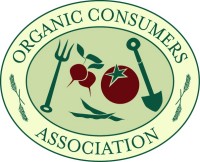In an article from The New York Times, Mark Bittman released some very interesting links about the latest developments in our food industry; but two are most relevant to this month's blog topic.
The first is a link to an article written by Melanie Warner about the new USDA regulations set on school cafeteria lunches. Apparently, these new regulations are making it more difficult for the makers of the stereotypical school foods (i.e. frozen pizza, french fries, chips, etc) to stay in the market. They now are scrambling to try to make healthier foods that will stand a chance to still be included on the school menus. One company, Schwan Food Company, has worked really hard to add whole wheat to their pizzas' crust, to cut sodium, and boost the fiber levels. While the calories may have been reduced on the pizza products, the health of the food has not necessarily been increases - since they cover up the bitter taste of whole wheat by adding in tons of sugar, upping the carbs. In addition to many of the USDA's cuts, they now have limited the amounts of starchy vegetables that kids can eat at lunch - putting the popular fry under fire.
A second link that Bittman gives us is to an Organic Consumers Association campaign called "Millions Against Monsanto". The goal is to gain the right to know what is in our food and how it was raised - so to know if it is a Genetically Modified Organism (GMO) or a Confined Animal Feeding Operation (CAFO). The group wants to petition to have labels placed on any and all foods in the supermarkets that fall into either of these groups. They hope to raise over 2,300 supporters in each of their 435 chapters around the nation, topping out at over 1,000,000 supporters against Monsanto by the time of World Food Day (October 16, 2011). If you would like to read the petition or get involved, please visit their website.
A final link that pertains to this month's topic is to an article written in support of sustainable farming, and against industrial farming methods. In one article, the author takes a look at how the world would be if industrial agriculture took over. One example they give is Punjab, India. This society chose to farm industrially and learned that through "over-intensification of agriculture, they experienced water depletion, reduced soil fertility and micronutrient deficiency, non-judicious use of farm chemicals and problems of pesticide residue, reduced genetic diversity, soil erosion, atmospheric and water pollution and overall degradation of the rather fragile agro ecosystem of the state". They conclude by warning against the dangers of going full force into industrialized agriculture, that it is not only dangerous to our foods, but also to our environment. For another take on this, you can read Mark Bittman's thoughts in one of his opinion articles.
Exercise: BREAK - today is a good day for a run outside (its 85 degrees here!!) or the usual swim and yoga workout.
Eat: Peas are a great side vegetable dish and they contain all kinds of vitamins and nutrients. Peas contain vitamin C, vitamin A, folate, fiber, and protein.
Relax: Today was one of the most exciting days I have ever experienced. My friend Katherine went into labor and had her baby girl. Her name is Lailalyn and she was born at 9:16pm, weighing 7 lbs. She is the most beautiful little girl I have ever seen and it was such an honor to be there (in the waiting room) to support Katherine during her birth and to be able to meet Laila right after her birth!



No comments:
Post a Comment